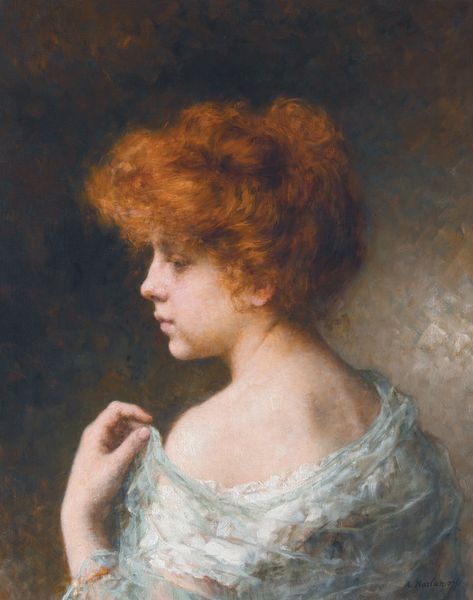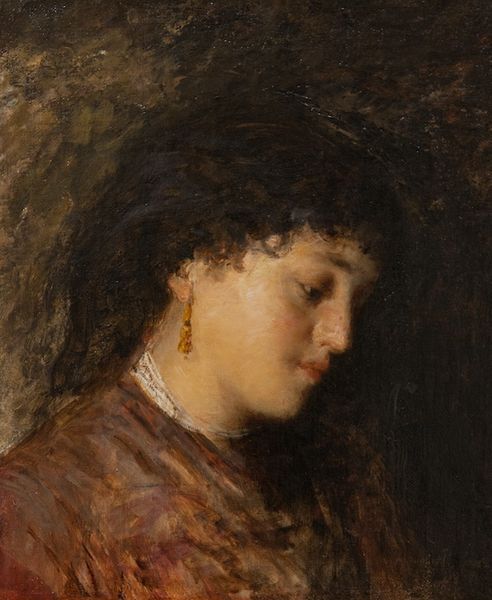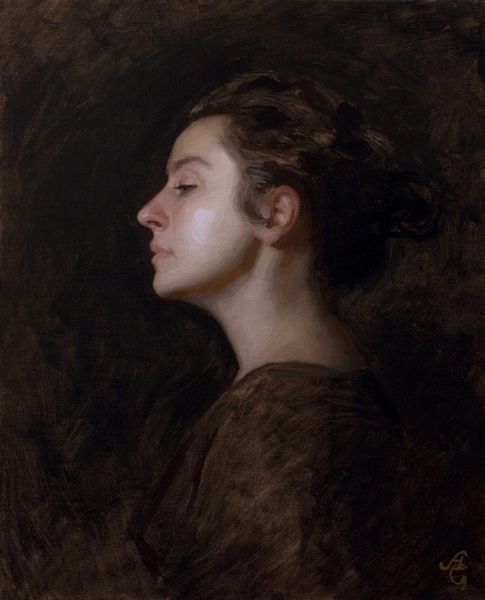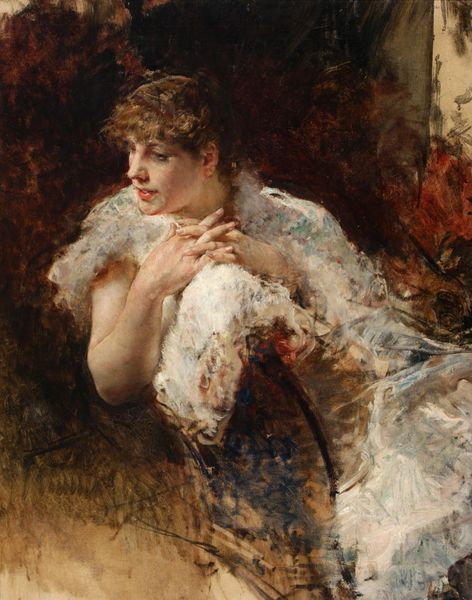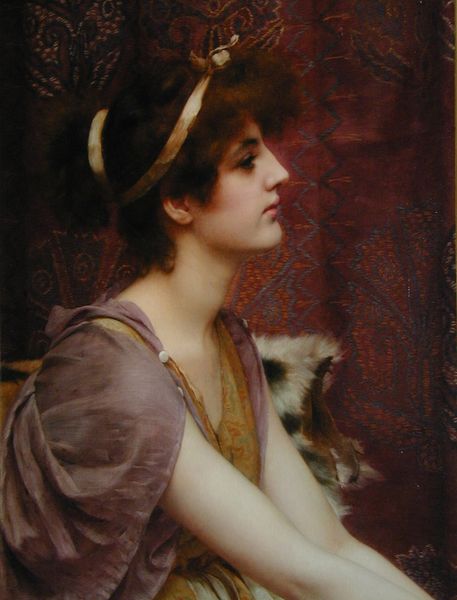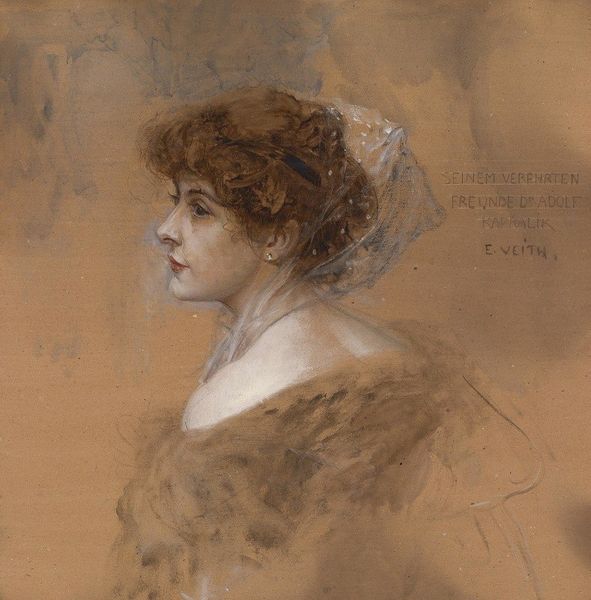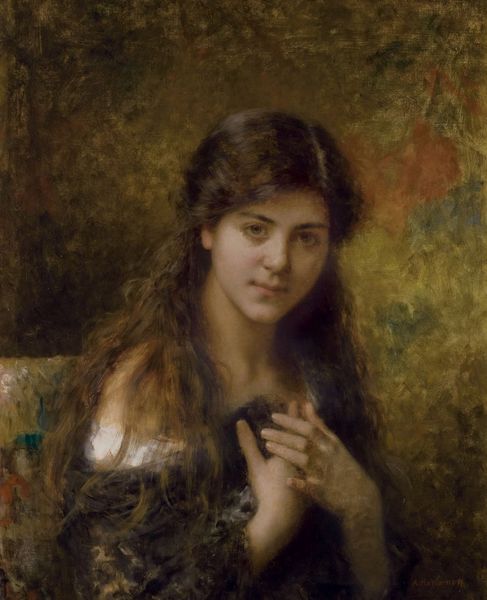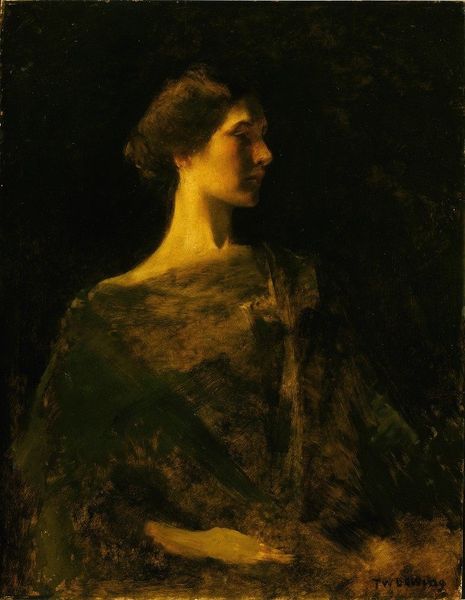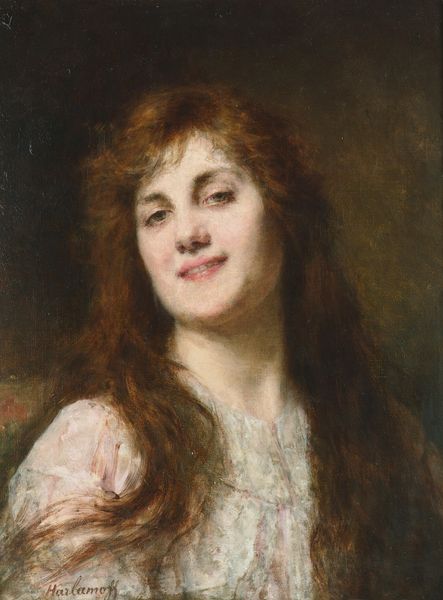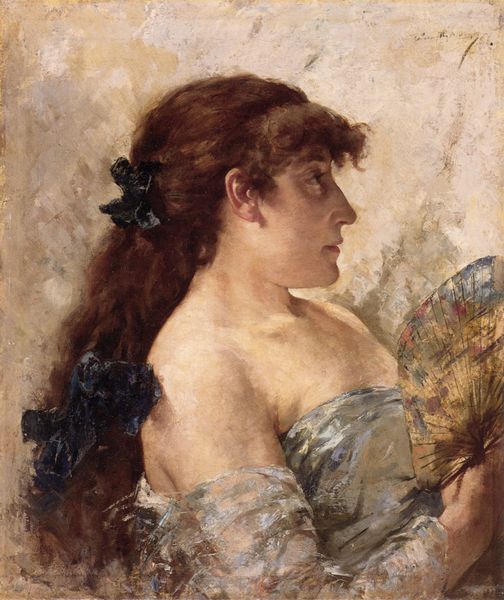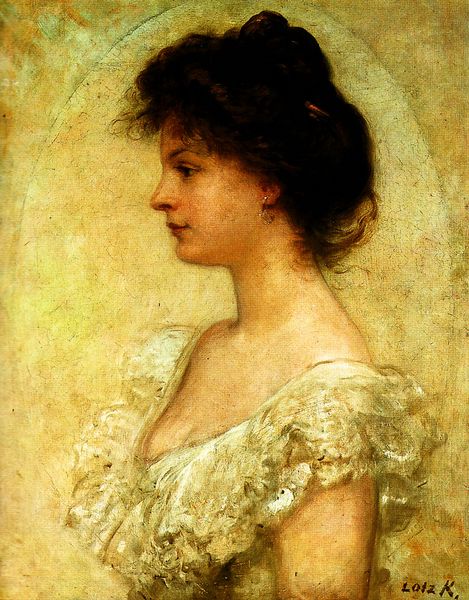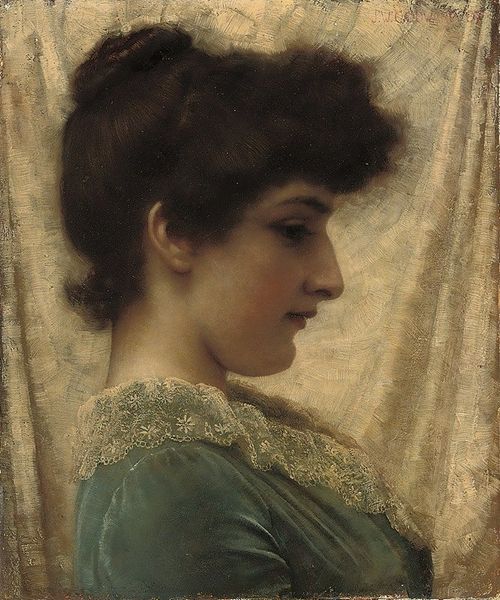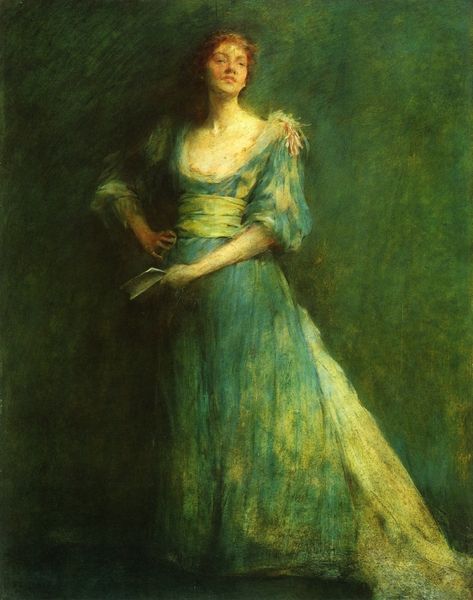
painting, oil-paint
#
portrait
#
painting
#
oil-paint
#
symbolism
#
academic-art
Copyright: Public domain
Curator: Looking at this artwork, “Bust of a lady”, dating back to 1897, crafted by Francesc Masriera. It is oil paint on canvas. Editor: I find it rather melancholic, with that shadowed, almost smoky treatment of the figure against what seems like a barely-there background. It feels deliberately obscure. Curator: Masriera, active in the late 19th century, navigated the space between academic art and symbolism. The piece reflects the portraiture conventions popular at the time but embraces a hint of emotional introspection. Think about how salons were a space to construct and display bourgeois female identities. Editor: It is true that his artistic milieu might indeed be positioned on that axis. What stands out for me are the textures here. That dress, or whatever she is wearing, has got these lovely, delicate wisps and folds, achieved only with pigment, time, skill and maybe stand oil. It would be interesting to analyze the social implication of clothes. Curator: I think what you’re calling attention to ties into the cultural performance that portraiture offered. For upper-class society, clothing and presentation signaled status, accomplishment. Note that soft gaze that conveys inner thought. The artist probably tried to convey intellectual life behind the pretty facade. Editor: Fascinating point, but the "pretty facade" still relies on some physical, tangible matter to emerge: canvas preparation, the pigments themselves, and Masriera’s skillful handling of them that contributes significantly to this whole impression. Without these considerations, it would be just another academic painting, right? Curator: Fair point. Perhaps a focus on materials grounds the interpretation and allows it to expand beyond mere stylistic convention. Editor: Exactly. Reflecting on materiality emphasizes that while we often perceive images as seamless representations, they are indeed constructs of specific ingredients, contexts, labor. Food for thought. Curator: Indeed, each viewing enriches and complexifies our own appreciation of this canvas.
Comments
No comments
Be the first to comment and join the conversation on the ultimate creative platform.
